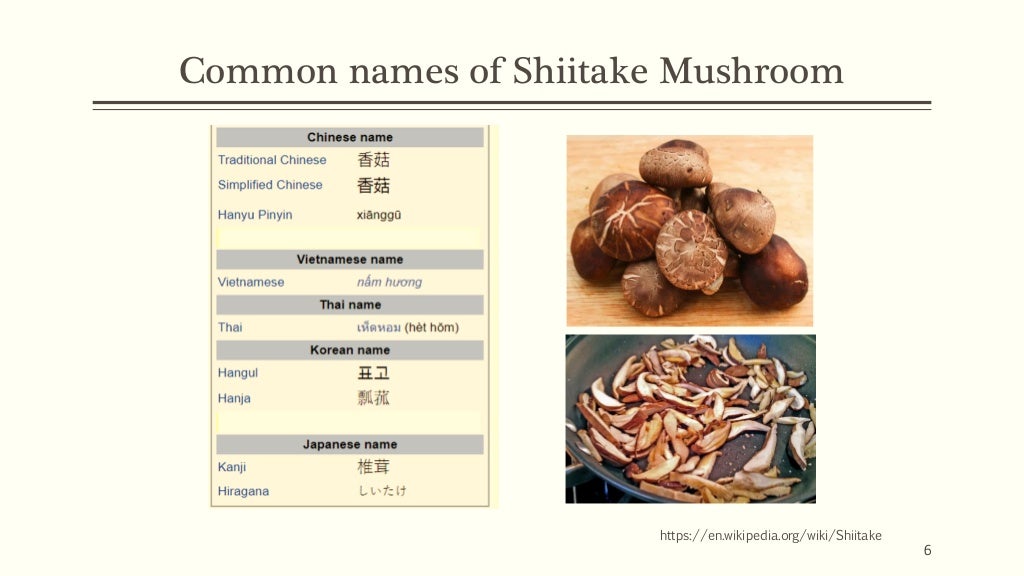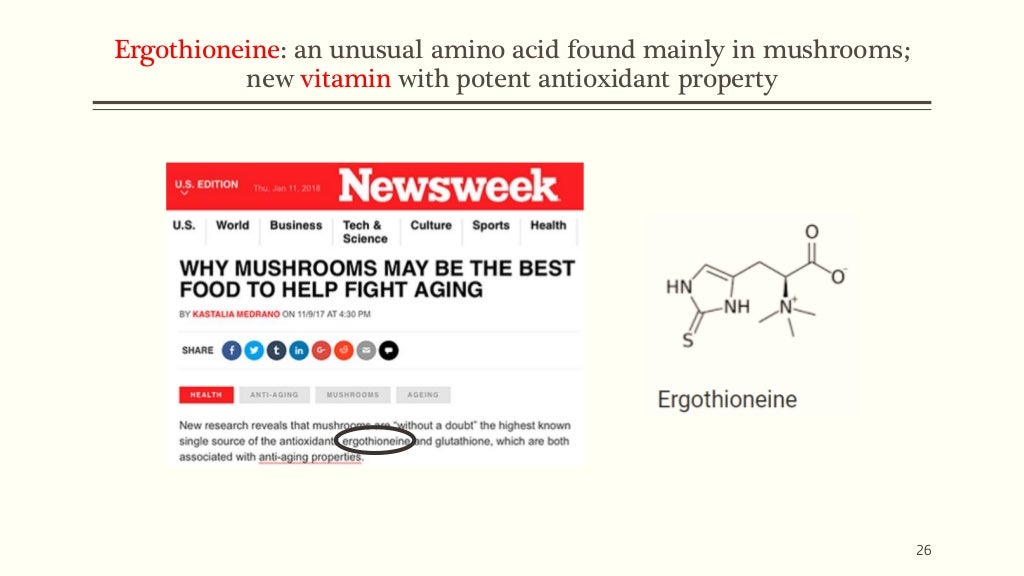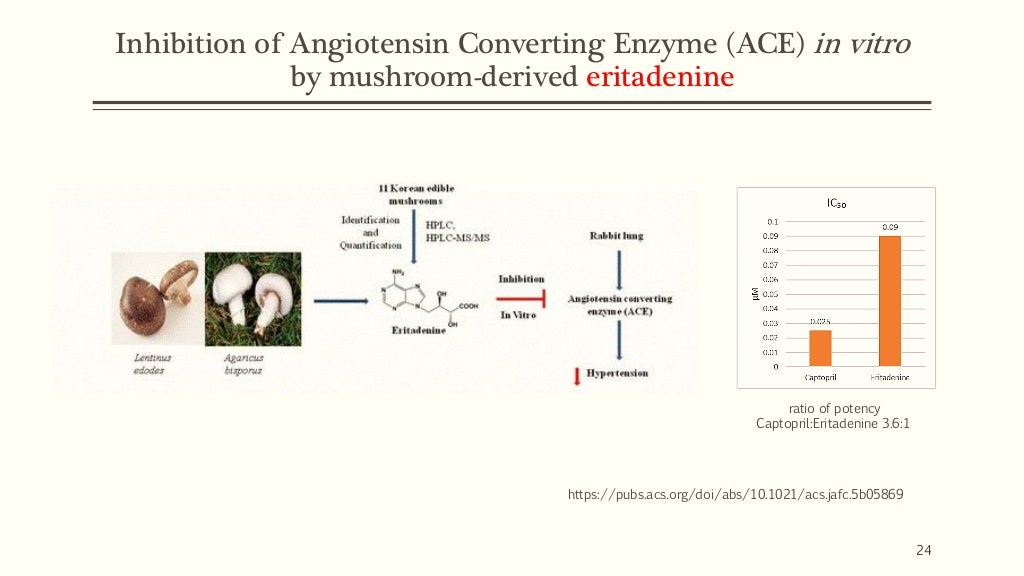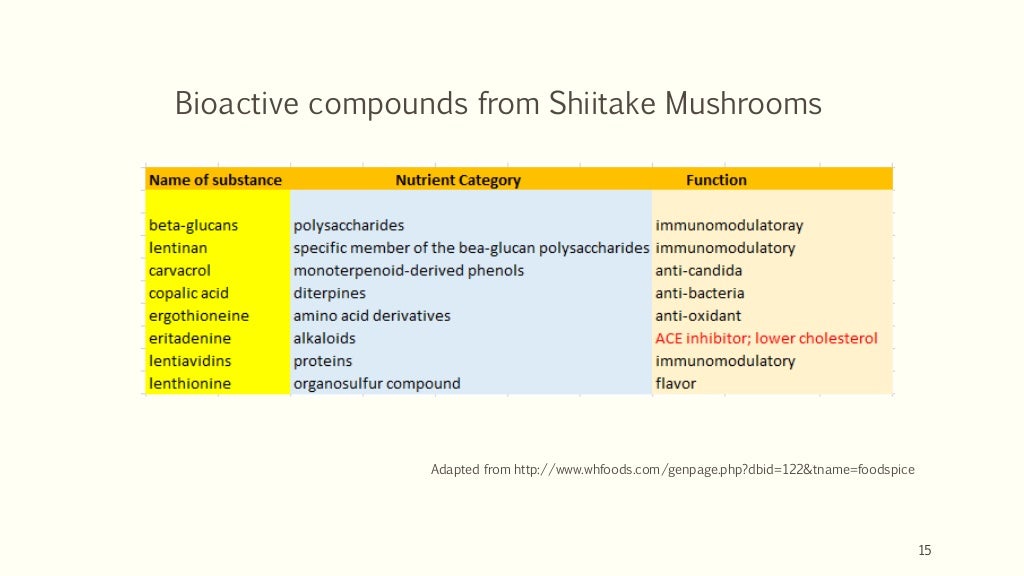UPDATE: thank you for the latest donation/investment to order 1 pound of Soltree Shiitake Shroom, sun-dried, wild forest grown. Let's hope Mother Nature and some good Forest cultivation produces a harvest! Sunlight plus real tree bark equals good shroom fruit conditions:

Thank you for your interest in the Shiitake mushrooms and the excellent question. The Shiitake needs to be fully cooked. So usually this means boiling in a soup or frying or baking or grilling.
Oh they're talking about the "stock" cooking with the powder in it. I found the "sawdust block" grown shiitake (the typical Shiitake sold) to not have much flavor, more just like wood. https://www.shiitake.tips/
The tree-grown Shiitake is grown in the wild forest so develops more antioxidants and other enzymes; amino acids for flavor.
Then when sun-dried the Shiitake develops what the Japanese called "umami" flavor that is proven to increase your glutamate and oxytocin (love) hormones. This is the meaty flavor secret as umami is also from eating beef and Shiitake is very high in protein.
Thank you for your interest in the Shiitake mushrooms and the excellent question. The Shiitake needs to be fully cooked. So usually this means boiling in a soup or frying or baking or grilling.
many Asian cooking traditions make full use of their meaty, smoky flavors by rehydrating them in water and tossing them - and, often, their cooking liquid - into stir-fries and other dishes.
The one and only known adverse reaction due to shiitake mushroom consumption is shiitake dermatitis. Consumption of raw or not well-cooked mushrooms may cause skin eruptions which usually occur 24–48 h after ingestion and are characterized by linearly arranged pruritic erythematous papules and plaques resembling flagellate pattern on the trunks and limbs.[27]You could use a temperature gauge I suppose - digital is very easy - to make sure to get the center to 165 or so. fascinating
Aqueous extracts of dried shiitake mushrooms (Lentinus edodes) were prepared as taste and flavour enhancers for meat formulations. Effects of time and temperature on the chemical and sensory properties of the extracts were examined.
the lower temperature extract was perceived to have less umami taste than the higher temperature extract (p = 0.048). Incorporating the 70 °C shiitake extract into minced meat formulations led to significantly higher levels of savoury tasting 5′-ribonucleotides in the cooked meat but no significant difference in umami perception.I have never had a digestion issue with Shiitake, but rather had enjoyed the meaty flavor. I guess the powder is pre-cooked? nope
High temperature may destroy the cell structure of mushroom, resulted in the release of cellular chemicals including amino acids and reducing sugars, therefore enhancing the formation of brown substances caused by Maillard reaction.[14,29]
high-temperature drying pretreatment could promote protein degradation better....[to] enhance the taste of dried mushrooms
However, these vacuoles inside the cell could not be found in HD [hot aired dried] samples treated at 60°C and 70°C, this is possibly due to water evaporation and a merging or even breakage of the cell walls...thus indicating severe contraction of the tissue with the rise of temperature. It is clear that high temperature in drying process resulted in the tissue dehydration and heightened deformation of cellular texture.
 |
| a) is 122 F. or 50 C. and b) is 60 Celsius c) is 158 F. or 70 C. drying temp; the last "d" is freezed dried |
Oh they're talking about the "stock" cooking with the powder in it. I found the "sawdust block" grown shiitake (the typical Shiitake sold) to not have much flavor, more just like wood. https://www.shiitake.tips/
You might not have eaten yet nature made Shiitake. Over 95% of the Shiitake available in supermarkets is artificial substrate cultivation.
Nature made Shiitake contains rich "Guanosine monophosphate (GMP). GMP makes glutamate taste more intensely Umami.
How about using the Shiitake of Natural log cultivation, instead of MSG (artificial glutamic acid)?
Nature made Shiitake grown up with nutriment from logs and moisture from deep fogs. Dried Shiitake has 10 times GMP than fresh. The process of drying and rehydrating increase GMP of Shiitake.Any science to back up this claim? YES!
a mixed‐carbon source was beneficial to umami 5′‐nucleotides and high mushroom production yield.
Sources of carbon (C) such as lignin, glucose and fructose are essential for
Non-structural carbohydrate reserves (starch and soluble sugars) are essential for the survival of woody plants after stress or while overwintering (Kobe 1997, Canham et al. 1999, Kaelke and Dawson 2005) and commonly constitute more than 90% of the available C in plants, except for genera with significant lipid storage (e.g., Pinus and Tilia; Hoch and Körner 2003). Besides the reserve functions of carbohydrates, soluble sugars can also serve as freezing protectants. For example, sucrose, raffinose and stachyose have been shown to accumulate in birch (Betula platyphylla Sukat. var. japonica Hara) xylem in response to freezing, leading to enhanced freezing tolerance during winter (Kasuga et al. 2007).
the sugar- rich sap is rising in the trees to feed the buds and new ... The higher the sugar content, the faster the fungus will occupy the whole log.
The tree-grown Shiitake is grown in the wild forest so develops more antioxidants and other enzymes; amino acids for flavor.
Mushrooms produce a number of enzymes including lignin-degrading enzymes (laccases, lignin peroxidases, manganese peroxidases, arylalcohol oxidase, aryl-alcohol dehydrogenases or quinone reductases), and hemicellulose and cellulose-degrading enzymes (xylanase, cellulases or cellobiose dehydrogenase), to facilitate the degradation of lignocellulosic substrates (Sánchez 2009; Kabel et al. 2017; Vos et al. 2017).
Then when sun-dried the Shiitake develops what the Japanese called "umami" flavor that is proven to increase your glutamate and oxytocin (love) hormones. This is the meaty flavor secret as umami is also from eating beef and Shiitake is very high in protein.
Today, thanks in part to the shiitake mushroom, we use a fifth: umami. This sensation is caused by a chemical called guanosine monophosphate, which is found in large amounts in shiitake mushrooms.
As
for orders - this is my first season and I may not even have a harvest
this Fall. The spawn-run is 6 months minimum before a fruiting of
shrooms.
Strain UFV52 had the highest and fastest fructification, producing mushrooms 90 days after inoculation, while isolates UFV62 and UFV63 began to frutify after 120 days. These strains produced mushrooms with different morphological characteristics. UFV52 mushrooms were bigger and had little pigment, while UFV62 and UFV63 isolates were smaller and darker (data not shown).It has been very unusually cold due to the Arctic melting so fast and the jetstream with arctic cold air getting stuck in the upper Midwest. But I am using what I call "mini-logs" on Birch and Alder - and they seem to be growing fast. I will be going back up to the EcoEcho Forest Cultivation farm to soak the logs - probably in a few days. So I should see more mycelium white growth on the end of the logs.
If
you want to make a pre-order - I consider this to be a "no guarantee"
investment into a community-supported farm. Certinaly if I get the
harvest then I will gladly mail it out. If I get the harvest - I can
sun-dry and then grind the Shiitake into a dry powder. This would make
it cook faster for you, and you can just sprinkle the mushroom into
almost any meal - as long as you make sure to cook it well enough. So in
its dry powder form it should only need a few minutes cooking but I
would have to look up "recipes" to just clarify any cooking details. Lots of reviews of the below on Amazon
Takii Pure Umami Powder, Magic Shiitake Mushroom Seasoning, Add Instant Flavor and Depth to All Your Favorite Dishes
Yes cooking details would be subject to the person preparing the shiitake.
But Shiitake shrooms are inherently medicinal with anti-bacterial and
anti-viral properties especially when they are grown in the wild.
One of the main reasons I like to eat Shiitake mushrooms (along with other medicinal mushrooms) is because they neutralize the free radicals and other bacterial or viral energy blockages in the body/mind. That is my experience at least and there seems to be a lot of science on this subject.
It could be concluded that in addition to the fungal isolate, the growth substrate must be considered when evaluating the minerals or the production of antimicrobial substance(s) in the mushrooms....
I discovered that finely pulverized shiitake powder can radically improve most home cooking. It adds a tremendous amount of flavor and umami (savory goodness) to everything. I now always have a tin of finely ground shiitake near the stove, right next to the salt and pepper. It's become that basic.
One of the main reasons I like to eat Shiitake mushrooms (along with other medicinal mushrooms) is because they neutralize the free radicals and other bacterial or viral energy blockages in the body/mind. That is my experience at least and there seems to be a lot of science on this subject.
The cultivation of shiitake dates way back to 1100 A.D. during the rule of Sung dynasty which is replaced by more modern and efficient sawdust substrate log cultures lately. Shiitake mushroom extract can be isolated in various forms such as freeze dried, oil, and ethyl acetate extracts. Various biologically active compounds such as erythritol, copalic acid, adenosine, carvacrol, and many more are responsible for this mushroom's antimicrobial activity. Anticariogenicity can be attributed to the induction of the detachment of cariogenic microorganisms from hydroxyapatite, changes in cell surface hydrophobicity, bactericidal activity, and disruption of signal transduction in Streptococcus mutans as proved through various in vivo and in vitro studies. Apart from these benefits, it has tremendous potential to be used as an antioxidant, anticancer, antigingivitis, antifungal, and antiviral agent. https://www.slideshare.net/ssusera9ba27/food-as-medicine-shiitake-mushroom-lentinula-edodes
A variety of biologically active compounds is present in the extract obtained from this mushroom which has potent antimicrobial activity. These include the following:
- Erythritol[13]-1,2 and 3,4-butanetetrol; which has 70–80% sweetness to that of sucrose
- Sesquiterpenes, steroids, anthraquinone, benzoic acid derivatives, and quinolones;[13] present in LMM fraction of shiitake extract
- Copalic acid;[14] a metabolite of sesquiterpenes
- Adenosine;[13] present in LMM and high molecular mass fractions of shiitake extract
- Carvacrol;[15] an aromatic monoterpene present in the oil extract of shiitake mushroom.
This mushroom has several health beneficial effects like anticancer, antidiabetic, hypotensive, hypocholesterolemic, antimicrobial activities (Wasser, 2005). Also, it is important nutritionally because of its higher protein, dietary fibers and important mineral contents (Khan et al., 2009).
The antimicrobial, cytotoxic, anti-inflammatory, and antioxidant properties of aqueous extracts of raw and culinary processed shiitake mushroom
In this study, dried powder of L. edodes fruiting bodies was used to evaluate immunomodulatory, hepatoprotective, and antioxidant effects in hypercholesterolemic rats. ...Various biological health biomarkers, such as total antioxidant capacity, total oxidant status, arylesterase, paraoxonase activity, and liver enzymes in serum were studied to evaluate antioxidant and hepatoprotective responses. Cell-mediated immunity was evaluated in each group through a delayed type of hypersensitivity reaction. The total oxidant status decreased significantly (P ≤ 0.05) after administration of L. edodes in the diet. The cell-mediated immune response significantly increased (P ≤ 0.05) in the LEG. The significant decrease in liver enzymes supports the hepatoprotective effect of L. edodes. In conclusion, the results show the immunomodulatory, hepatoprotective, and antioxidant activities of L. edodes supplementation in hypercholesterolemic rats.
Scrambled eggs: Saute shallots and plenty of fresh rosemary, a good tablespoon of dried shiitake, a dollop of Greek yogurt, and four eggs, over the lowest heat you can get. Heaven.
Pasta sauce: Prepare your favorite sauce, adding a good quantity of shiitake to wildly increase the flavor. Just be sure to add it early, usually with frying onions.
Soups: Add to the soup base; watch the flavor explode.
Cooked greens: Saute shallots and shiitake powder; add greens (chard, kale, dandelion, collards, mizuna, spinach or the like) and cook until done.
If you want to make an order then there is the paypal link on my blog. I will post the above on my blog and then give more hypertext links and details.
Happy Solstice! Stem to cap taste-nutrition difference
Results showed that the stipes contained 82.94 g/kg fiber and 439.56 g/kg carbohydrate, which were significantly higher than that in caps, and calcium content in stipes (370.10 g/kg) was significant higher than that in caps. 18 amino acids and the ratio of essential and nonessential amino acids in stipes were more closely to model protein than those in caps, while taste amino acids contents and flavor 5ʹ-nucleotides in stipes were significantly lower than those in caps, and equivalent umami concentration in stipes was one-fifth of that in caps. In addition, the main volatile compounds showed no significant difference in both stipes and caps. Thus, the stipes were more nutritional than caps in the contents of fiber, carbohydrate and calcium, and could be used as dietary ingredients to enrich them for health benefit.





No comments:
Post a Comment